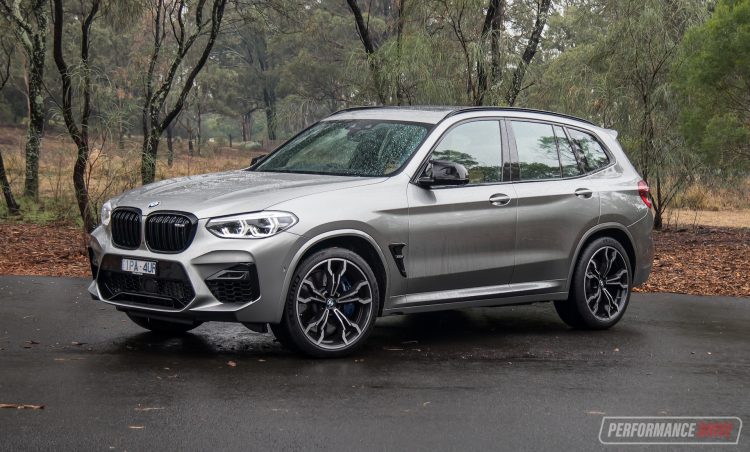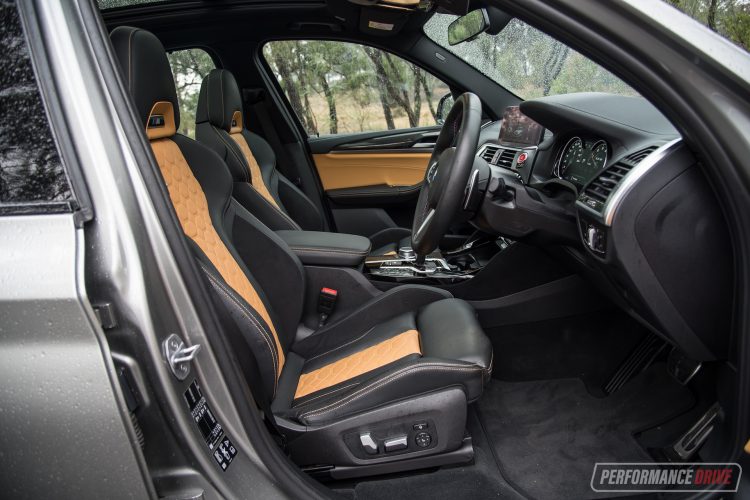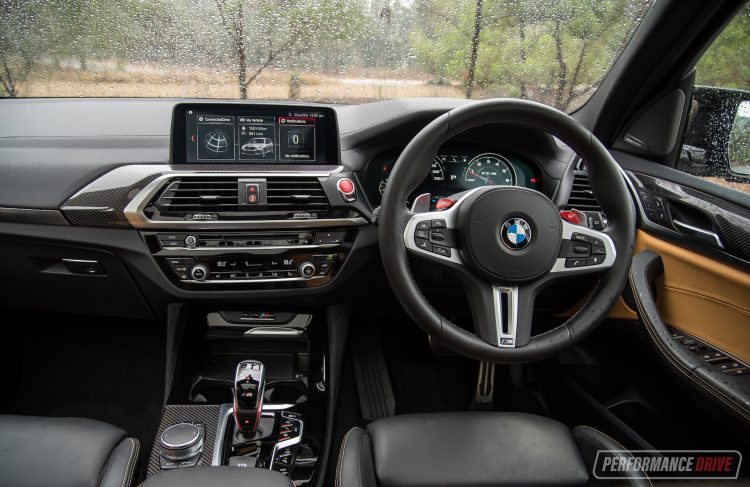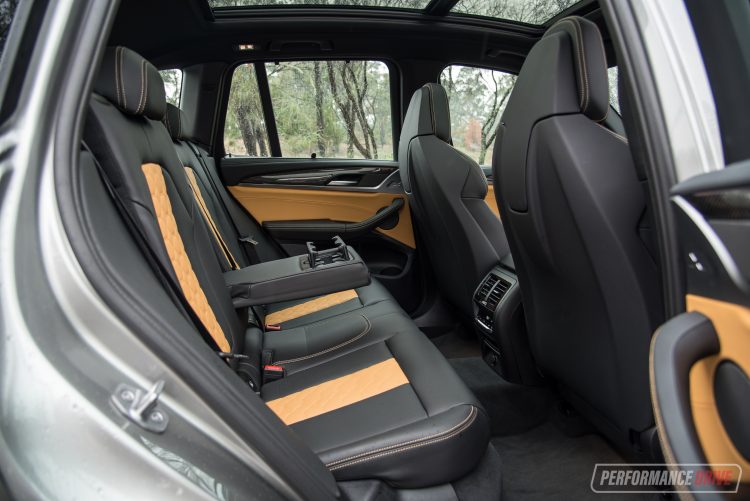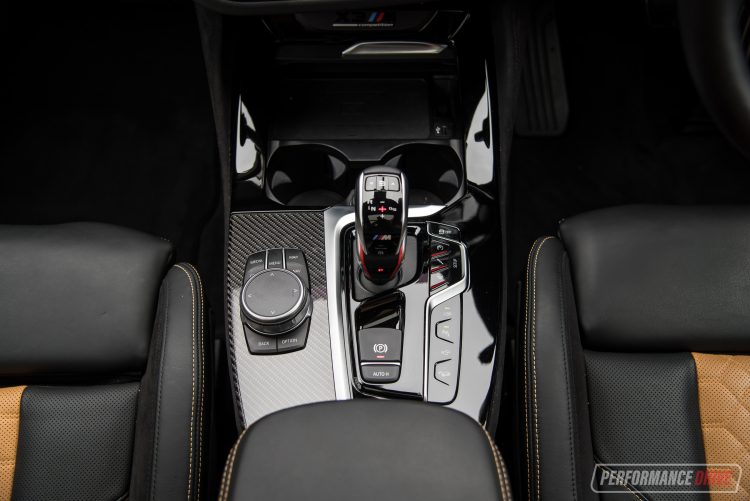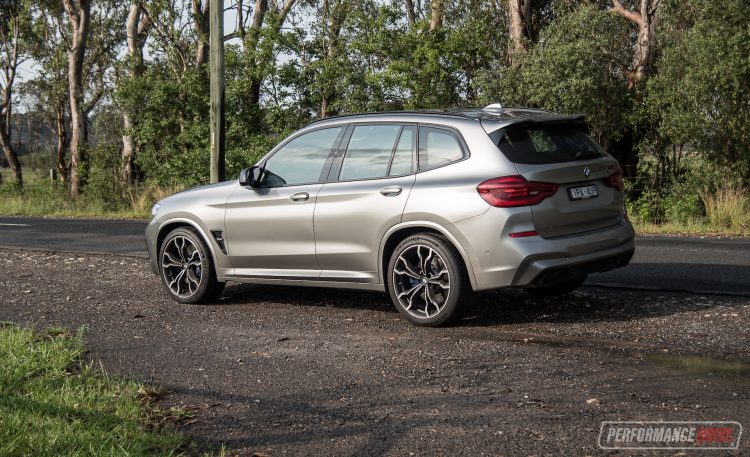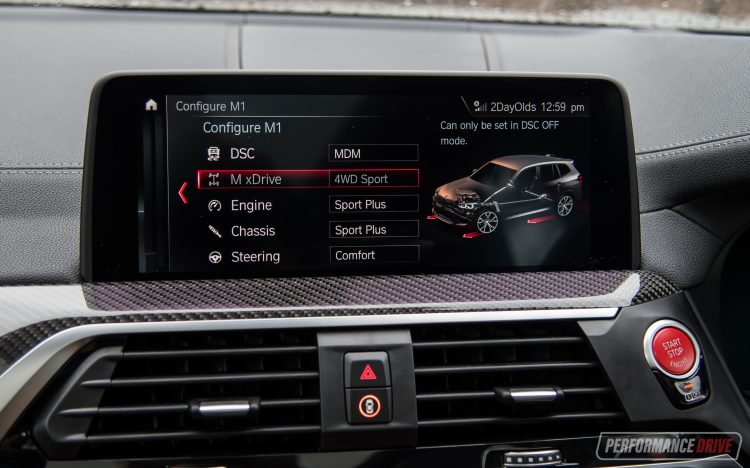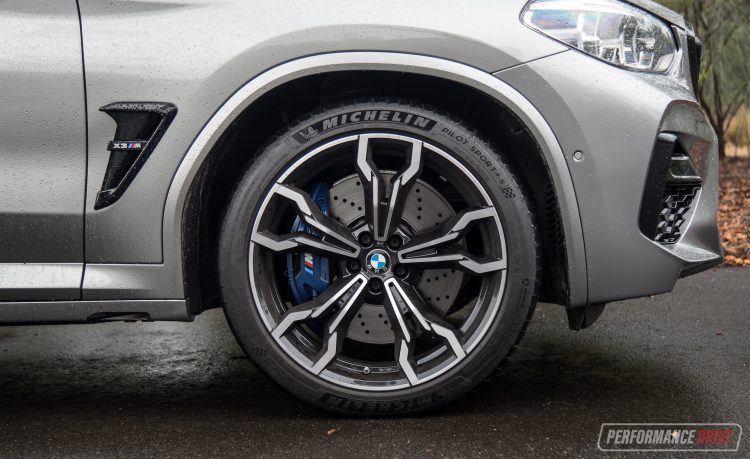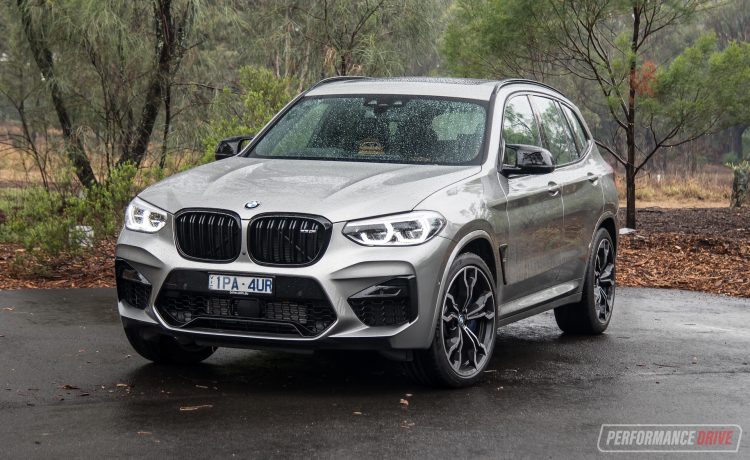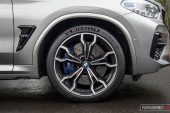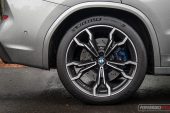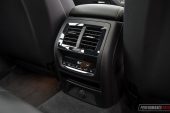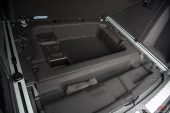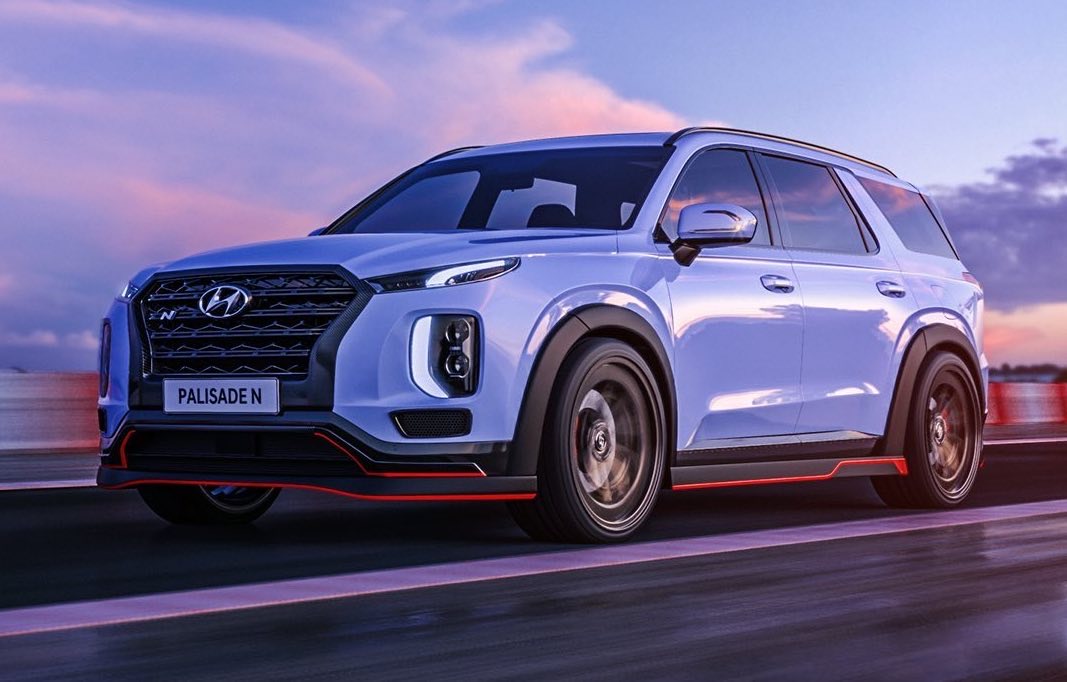As much as we all pretend to hate and even force ourselves to refuse to accept SUVs as viable and appealing products, they are the most popular vehicle style of all. And fortunately for those of us who remain committed to performance sedans and wagons, clinging to their very last thread, many carmakers are now at least providing a rehabilitating transition between the two. A case in point is the new BMW X3 M Competition. It is basically a BMW M3 that’s raised-up, with a more practical wagon body plonked on top.
This is BMW M division’s first foray into the world of premium mid-size SUVs, and really only its second ever step into the SUV market following the introduction of the X5 M/X6 M back in 2010. It competes with existing models in this field, such as the Alfa Romeo Stelvio Quadrifoglio, the Jaguar F-PACE SVR, and the Mercedes-AMG GLC 63 S. It’s also similar but completely different to the BMW X3 M40i, which is designed and developed by BMW and not BMW M.
In Australia only the Competition version is available, whereas overseas there is a regular X3 M. We ain’t complaining though because the Competition version gets a more powerful engine (375kW up from 353kW), and comes with a lot more fruit as standard.
Prices start from $157,900 (excluding on-roads). This places it in the upper-middle section of this specific segment. Compared with those aforementioned key rivals; Alfa Romeo (from $149,900), Jaguar (from $140,262), and Mercedes (from $164,600).
2020 BMW X3 M Competition – THE SPECS
[column width=”47%” padding=”6%”]Engine: 3.0-litre twin-turbo inline-six
Output: 375kW@6250rpm / 600Nm@2600-5950rpm
Transmission: Eight-speed auto
Drive type: AWD, active M rear differential
Wheels: F: 21×9.5, 255/40 R: 21×10, 265/40
ANCAP: Five stars (regular X3)
Tare weight: 1928kg
Power-to-weight: 5.41:1 (kg:kW)
Official fuel economy: 10.6L/100km
Economy during test: 12.5L/100km
Fuel capacity/Type: 65L/98 RON[/column] [column width=”47%” padding=”0″]Power efficiency: 35.37kW:L/100km
0-60km/h: 2.16 seconds*
0-100km/h: 4.00 seconds*
0-200km/h: 13.46 seconds*
60-110km/h: 2.41 seconds*
1/4 mile: 12.12 seconds at 191.3km/h*
Max acceleration: 1.089g
100-0km/h braking: 2.81 seconds at 35.81 metres*
Max deceleration: -1.497g
Decibel at idle: 42/46 (Sport mode)*
Peak decibel at 60-100km/h: 91*
Priced from: $157,900[/column][end_columns]
* Figures as tested by PerformanceDrive on the day. Factory claims may be different
2020 BMW X3 M Competition – THE PACKAGE
Even though this is a hardcore performance vehicle, the interior packaging and overall practicality is excellent. The latest X3, in our opinion, provides a spacious, well-appointed cabin that’s filled with plenty of technology that you’d actually use. And thanks to a relatively tall cabin orientation and high ceiling, the X3 offers class-rivalling headroom and legroom. There’s also a great sense of airiness throughout, with no unusual shapes or protruding fixtures interrupting the pleasant setting.
Fortunately, all of this carries through to the X3 M Competition version. You still get BMW’s highly-commendable iDrive hand controller system, although running the 6.0 operating system (more modern BMWs now use 7.0), with a 10.25-inch wide screen on the dash offering touch functionality. Most of the menus and overall screen navigation is quick to fathom, and there’s plenty of useful apps and some interesting functions in there. You can even display real-time power and torque outputs, check your oil level or tyre pressures, and browse the internet and check traffic and weather. Standard kit also includes a fully digital instrument cluster that features physical edges to outline the main dials
BMW has only just started rolling out Apple CarPlay and Android Auto connectivity on some of its vehicles, and unfortunately this model misses out. You can option for Apple CarPlay for $623. We suspect that will soon change with minor software updates over the coming months. Digital radio is standard though, unlike many rivals out there that charge extra for it, and you get the full surround-view parking camera system with rear cross-traffic alert, and a wireless charging pad for compatible phones as standard. Again, many Euro rivals out there like to charge extra for this stuff.
The front seats mimic those on other BMW M Competition models, however, on the M4 Competition, for example, the side indents actually poke through. Your back doesn’t touch them but the visual impact is higher on the M4 simply because there are essentially holes in the seats. These are awesome seats, though. Very cushy and comfortable and they also offer superb lateral support for enthusiastic cornering. There’s lots of adjustment to be had from the steering column, with both reach and tilt, and the front seats can be moved to extremes.
As you’d expect from a BMW, the driving position is perfect and you get to play with a chunky M sports steering wheel with paddle shifters behind. You can also activate and adjust the standard head-up display and even configure it to show a shift-light sequence when in the sports modes. Speaking of which, the X3 M Competition offers Eco Pro, Comfort, Sport, and Sport Plus modes for the steering, suspension and engine, with a separate three-level setting for the transmission. You also have two preset buttons on the steering wheel, called M1 and M2, which can be programmed to store all of your favourite settings. For example, you might like Sport Plus for the engine and Comfort for the suspension, level 3 for the transmission, and Sport for the stability control. Well, you could activate all of that in one push by programming either M1 or M2 (actually two pushes – it asks for confirmation).
Rear seat accommodation is very good for the mid-size SUV class, and there are essentially no sacrifices with the X3 M. With the Competition though you do get those chunky bucket seats in the front which do take up a fraction more room. And they don’t come with pockets in the backs. But we’d hardly call that a compromise. Rear passengers are treated to semi climate control (temp and fan position, but no fan speed control), along with a single 12V socket and heated outer seats on this test car ($700 option). This test vehicle is also showcasing pull-up blinds for the door windows, as well as the no-cost option carbon fibre interior trim pack.
Boot space is rated at 550L in the standard seating configuration, and 1600L with the rear seats folded down flat. This is the same as all other regular X3s. You can fold down the rear seats from either the boot area or via a button on the side of the seats. Some under-floor storage is also available for those smaller, rollie-around items, with tie hooks and a netted pocket on the sidewall for added convenience.
2020 BMW X3 M Competition – THE DRIVE
One of the most interesting things about the new X3 M, aside from it being M division’s first model for the mid-size SUV class, is the engine. It’s codenamed the S58, which is an evolution of the outgoing M3/M4’s S55 unit. Capacity is slightly increased, from 2979cc to 2993cc, and the compression ratio is reduced from 10.2:1 to 9.3:1. It’s pressurised by two mono-scroll turbochargers, with double VANOS variable valve timing keeping the combustion sequence running at maximum efficiency and performance.
Peak power for the Competition variant is 375kW. This is achieved at 6250rpm. BMW M fans will immediately notice that this is a relatively low rev for peak power for an M car. Even the outgoing standard M3 requires 7200rpm to achieve its peak power of 317kW. That will be seen as a negative thing by traditional BMW M fans, there’s no doubt about that. But regardless, the power is huge. Much higher than any previous M3 or M4 production car. It’s also the precise power of the Alfa and Mercedes rivals.
The torque output is very impressive and it does give you some indication of BMW M’s shift in philosophy. Some of the sway away from higher-revving units is no doubt influenced by tighter emissions standards. But at least now we have ship-loads of torque. Between just 2600rpm and 5950rpm you get the full 600Nm. That’s not only more than the outgoing S55 (550Nm), it’s also available at a higher rev range (S55 was 1850rpm-5500rpm). And, you can rev the crapper out of it if you want to, with the redline cutoff not hit until 7200rpm.
So, how does it feel out on the road? The first thing we notice about this engine compared with the old S55 is just how smooth and more refined it is. The mid-range grunt also feels much stronger and more linear. You don’t need to work it as hard to achieve great things in terms of speed and overtaking, in other words. There is still plenty of M character in it, too. From the exhaust outlets you hear hints of that trademark inline-six howl, with plenty of pops and crackles in Sport mode or with the exhaust valve opened (via a button on the console).
Performance on the clock is earth-shattering. Using our Vbox and a private road we saw a best 0-100km/h time of just 4.00 seconds dead (BMW claims 4.1), with 0-200km/h coming up in 13.46 seconds, and the quarter mile in just 12.12 seconds. That’s quicker than the Jaguar F-PACE SVR that we recently tested, and it has 30kW more power and 80Nm more torque, while weighing just 8kg more. The 0-200km/h time is particularly impressive, demonstrating this new engine’s incredible top-end pull even with the aerodynamic deficiencies of an SUV body.
Around corners the X3 is already a star performer in this class. In fact, we’d say it is at the very top of the class for engagement and capability. BMW M has craftily amplified every aspect. It’s tauter and more focused, and seems to enjoy turning a little bit more. You also get sharper response from all areas, including the steering, tyres, suspension, and brakes. We’d also like to highlight special credit to the all-wheel drive system as it is both fool-proof but supports flamboyant driving styles if you prefer.
That’s because there is a setting that allows you to toggle through the 4WD system’s characteristics, with Sport Plus mode offering an almost rear-wheel-drive level of playfulness. Flick the stability control off completely and it will actually maintain a drift under power, so long as you throw it in and use some weight shift to initially break traction. Obviously, these sorts of shenanigans aren’t for everyone. So, leaving the 4WD setting in the default mode gives you the surefooted confidence that you’d expect from an AWD. There’s also an active M rear differential to provide controlled pivot.
Interestingly, we notice the X3 M Competition comes with staggered wheel and tyre sizes front and rear. That’s not that interesting, we know. But taking a closer look at the measurements for the Michelin Pilot Sport 4 S tyres, we see the front adopts 255/40 while the rear uses 265/40. That’s peculiar considering the standard X3 with the M Sport pack uses 275 on the back, as with the X3 M40i as well. We suspect M engineers have found there is better engagement and perhaps some play to be had with slightly narrower 265 rear tyres. We also suspect this has helped to reduce understeer, because, during our testing, this wasn’t a common trait. Nice work, M.
Now, being an SUV means there is some ground clearance so it does provide a degree of off-road ability. We didn’t bother testing that, mainly because we didn’t want to ruin the beautiful road-oriented Michelin tyres. But that does mean the centre of gravity isn’t as low as it is in a sports car or sedan. Further than that, it means the ride is firm, especially in Sport Plus mode. This is simply the price you have to pay to have an SUV that, in the real world, handles as good as a performance sedan. Over bumpy and corrugated surfaces, with wet and dirt patches, such on Australia’s ordinary country roads, the X3 M would out-handle some sedans/wagons purely because you have more confidence to smash over anything. There are some rival performance SUVs that offer a slightly more forgiving ride, but they don’t handle as well when pushed hard in our opinion.
In Comfort mode the ride is much better. In fact, our M1 pre-setting was to have the steering and suspension in Comfort, with the engine and gearbox in Sport Plus/level 3. In the real world, with this setup, the X3 M Competition is unbelievably quick from point to point. Yet, put it all back into Comfort and it behaves pretty much like the regular X3 with the M Sport pack. Only you get that purring inline-six engine under the bonnet just waiting to pounce.
2020 BMW X3 M Competition – THE VIDEOS
2020 BMW X3 M Competition – THE VERDICT
The X3 M Competition is literally like having an M3 wagon that’s slightly raised. Yes, it’s not quite as sharp and yes the suspension is a bit firmer (in Sport Plus mode) to – successfully – counter the laws of physics. But what you’re left with is a more practical option than the M3, that could venture off road if needed, and could retrieve the groceries or pick up the kids and their sporting gear on a regular basis.
If you attend track days every weekend, we reckon stick with an M3. If you’re just about to buckle and give in to the world of SUVs, but you’d still like to hit the track every month or so, this is perfect. It’s a versatile yet hardcore performance car that will fit in with a wide variety of lifestyles.
[column width=”47%” padding=”6%”]PROS:
– Refined new 3.0L twin-turbo provides incredible yet versatile performance
– Excellent cabin execution and ‘M’ theme
– Handles like a sports car, very engaging
– Practical, fine for everyday use
– Useable technology
[/column] [column width=”47%” padding=”0″]CONS:
– Fake engine sounds inside (no need for it)
– X3 M40i will do the job for most, and around $50k less[/column][end_columns]
As always, if you’re thinking about buying a new car don’t forget to click here to speak with our car buying specialists.
